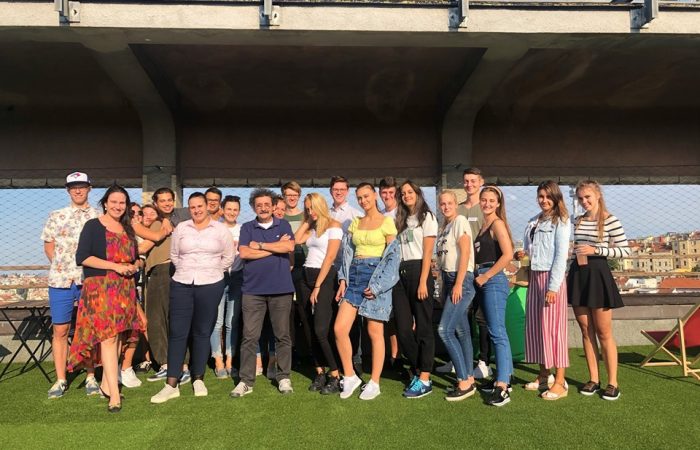
The Summer School Report
September 2, 2019 Why Summer School?
Throughout our project, we developed lesson plans, we piloted them in our home countries, and then piloted them in each other’s countries. We cooperated intensely and also worked with teachers. It was only thanks to them that we could actually test our lesson plans and see how they worked. But there is still one set of heroes missing from this story: the students. Without even knowing it, they helped us work out and enhance the lesson plans, and then even understand them.
From the very beginning of this project, we planned to hold a summer school. This idea comes naturally from how we approach teaching: in the same way that our lesson plans go beyond textbooks, the summer school was meant to take students out of the classroom.
Thus, we brought students of about age 18 from the Czech Republic, Bosnia and Herzegovina, Bulgaria, and Slovakia to Prague. During their stay, we offered them a variety of approaches and activities, spanning from workshops and movie screenings, to visiting museum exhibitions, to memory walks or state socialism “sightseeing”. The diversity of approaches towards the past reflects what the public space offers to anyone looking for it: the past is everywhere, and it comes to us in many forms — and it can be easy to get lost in it. That’s why it’s so useful and refreshing to (sometimes) have a compass that would help us navigate through.
The Four Perspectives Scaffolding
It would make no sense to drown participants of the summer school in a plethora of experiences and activities. Our goal was to help them to develop a kind of a spontaneous methodology, a frame that would help them get oriented in whatever crosses their paths in the future. Our starting point was this very site, Socialismrealised.eu, and the four perspectives towards past that it provides: ideology, oppression, memory, and personal story. Building on these four pillars, we wanted to help our students understand the often ambiguous, equivocal, conflicting or confusing past of the Eastern bloc in all of its complexity, on the one hand, and, on the other hand, allow them to avoid the two recurring extremes: either blind condemnation, or uncomplicated advocacy of state socialism.
How should one, for example, approach a badge of honour that a grandparent was given for his or her good work? Is it an object of nostalgia, because it offers a memory of the certain value that state socialist regimes granted to the working class? Or is it just a sign of collaboration with a totalitarian state? How about all of those rows of housing projects blighting the Eastern European suburbs? Aren’t they also an illustration of certain welfare achievements? And how could someone hold dear a muslim scarf that only testifies to the harsh repression towards that religious group?
Badges, scarves, architecture — these are just a few examples of how simple objects can get very complicated. The four perspectives approach allowed our students to see all the layers and tones within them, bright and dark, without omitting some for the sake of the others.
The Students’ Blogs
It is sometimes useful to harness our ideas and wandering thoughts and put them into the strict form of writing. (Which this blog is an example of, anyway!) Thus, we asked our students to split into four groups, each defined by one of the perspectives: ideology, oppression, memory, and personal story. Each group consisted of participants from all the present countries, so that we avoided limitation to national histories and encouraged a more universal approach.
In the following four days, we will publish these blogs. The students may lack the robust methodology and education of history scholars. Their perception of past events is sometimes naive or inaccurate. And English is not their native language, so they may miss some finesse of expressions. But they all understood very well that history is not just one entity, but instead it contains many layers with various levels. And that some things can be seen as “good” and “bad” at the same time; as simultaneously valuable and threatening. In short, that the past is complicated, and that it is good not to approach it too hastily, but instead to first think about it for a while. I believe that our students eventually adopted these notions.
What else could a history teacher ask for?
